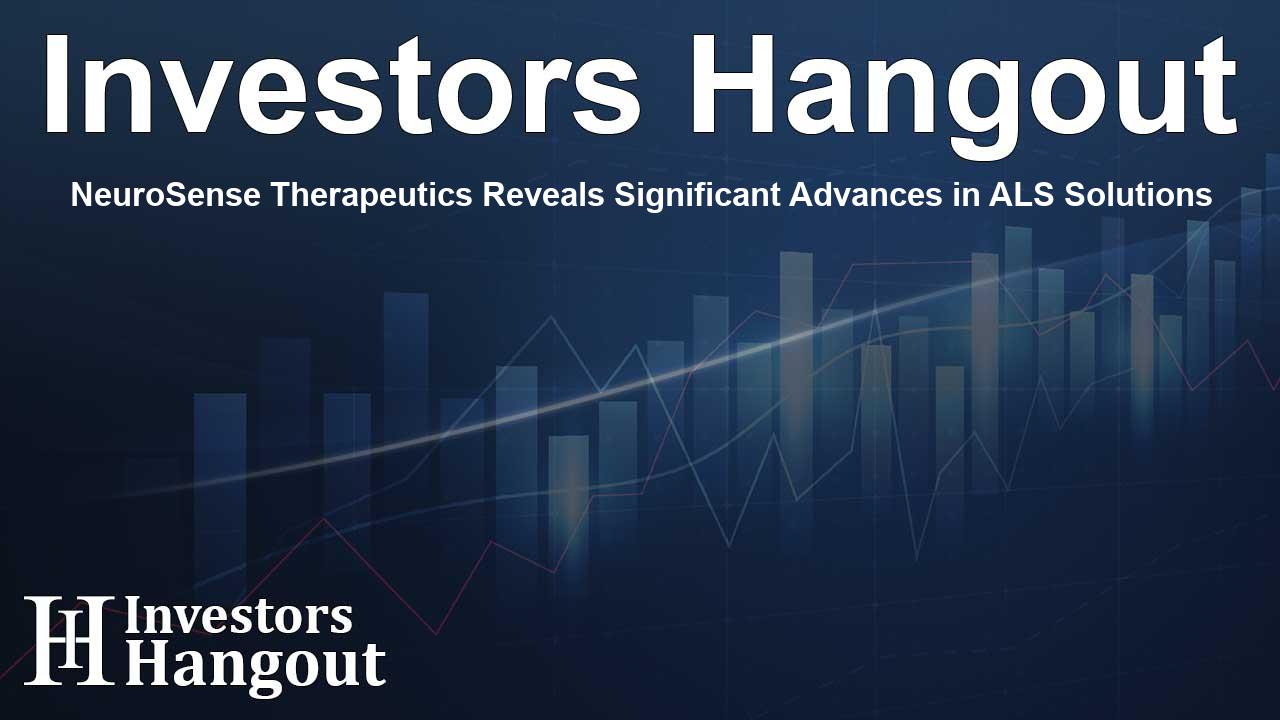NeuroSense Therapeutics Reveals Significant Advances in ALS Solutions

NeuroSense Therapeutics Reports Significant Advances in ALS Treatment
NeuroSense Therapeutics Ltd. (NASDAQ: NRSN), a pioneering clinical-stage biotechnology company, has shared promising developments in its treatment for amyotrophic lateral sclerosis (ALS). With the completion of its Phase 2b study for PrimeC, a novel therapeutic approach, the company aims to enhance the quality of life for individuals suffering from this debilitating disease.
Clinical Progress and Future Directions
PrimeC has successfully demonstrated its potential in slowing ALS progression and reducing functional decline. The results from the PARADIGM Phase 2b study, which included 68 participants, indicated substantial improvements:
- PrimeC slowed disease progression by approximately 33% after 18 months.
- Notable reductions in mortality rates and reliance on hospitalization and respiratory support, showcasing a remarkable 58% improvement in survival rates.
- The treatment effectively slowed functional decline, particularly affecting essential functions like speech and swallowing.
- Additionally, PrimeC exhibited a favorable safety and tolerability profile, aligning with the study's primary objectives.
These findings highlight an encouraging path forward as NeuroSense engages in ongoing discussions for partnerships that would facilitate the advancement of PrimeC towards regulatory approval and commercial availability.
Strategic Partnerships and Market Opportunities
The company is presently focused on forging collaborations to propel PrimeC into Phase 3 study, with plans for initiation in the forthcoming years. The design of this Phase 3 study aligns with the expectations of regulatory bodies, following constructive feedback from the FDA during meetings to assess the study framework.
Moreover, NeuroSense is preparing for early commercialization of PrimeC in select markets, estimating a significant market opportunity with peak annual revenues ranging from $100 million to $150 million. The recent issuance of a key patent extending the protection for PrimeC until 2042 further solidifies the company's position within the competitive landscape of ALS treatments.
Financial Performance Review
In reviewing its financial results, NeuroSense reported:
- Research and development expenses totaled $5.7 million for the year, reflecting a decrease from the previous year's $7.3 million, primarily due to reduced subcontractor and consultant expenses.
- General administrative expenses were reported at $4.2 million, down from $4.8 million, influenced by lower share-based compensation and insurance costs.
- As of December 31, 2024, the company had approximately $3.4 million in cash, positioning itself to continue its developmental work for PrimeC.
About ALS and the Impact of PrimeC
Amyotrophic lateral sclerosis (ALS) is a progressive neurodegenerative condition that leads to severe physical impairment and ultimately, death. In the U.S. alone, over 5,000 individuals are diagnosed annually, marking a significant burden on healthcare systems. The commercial viability of PrimeC gives hope to many facing this fatal condition and represents a critical area for intervention.
PrimeC, NeuroSense's leading candidate, is an innovative oral formulation that combines two FDA-approved drugs, ciprofloxacin and celecoxib. This unique formulation is strategically designed to target various underlying mechanisms of ALS, aiming to fight the motor neuron degeneration that characterizes the disease. Its advantage comes from previously solid results that indicated PrimeC’s effectiveness in improving biological markers and overall patient wellbeing.
NeuroSense Therapeutics is dedicated to advancing treatments for neurodegenerative diseases. The company recognizes the critical unmet needs in conditions like ALS, Alzheimer’s, and Parkinson's disease, striving to provide effective therapies that impact patients’ lives positively.
Frequently Asked Questions
What is the main objective of PrimeC in treating ALS?
PrimeC aims to slow disease progression, improve survival rates, and enhance the quality of life for ALS patients by targeting key mechanisms involved in the disease.
How did NeuroSense's Phase 2b study perform?
The Phase 2b study showed that PrimeC slowed disease progression by about 33% and significantly improved survival rates by 58% compared to standard treatments.
What are the future plans for PrimeC?
NeuroSense plans to initiate a Phase 3 study for PrimeC and is exploring partnerships to support regulatory approvals and commercial efforts.
What is the estimated market opportunity for PrimeC?
Estimates suggest a potential market opportunity of $100 million to $150 million in peak annual revenues for PrimeC in Canada.
How is NeuroSense's financial position as of the latest reporting?
As of December 31, 2024, NeuroSense reported approximately $3.4 million in cash, indicating a solid financial foundation to support their ongoing development efforts.
About The Author
Contact Caleb Price privately here. Or send an email with ATTN: Caleb Price as the subject to contact@investorshangout.com.
About Investors Hangout
Investors Hangout is a leading online stock forum for financial discussion and learning, offering a wide range of free tools and resources. It draws in traders of all levels, who exchange market knowledge, investigate trading tactics, and keep an eye on industry developments in real time. Featuring financial articles, stock message boards, quotes, charts, company profiles, and live news updates. Through cooperative learning and a wealth of informational resources, it helps users from novices creating their first portfolios to experts honing their techniques. Join Investors Hangout today: https://investorshangout.com/
The content of this article is based on factual, publicly available information and does not represent legal, financial, or investment advice. Investors Hangout does not offer financial advice, and the author is not a licensed financial advisor. Consult a qualified advisor before making any financial or investment decisions based on this article. This article should not be considered advice to purchase, sell, or hold any securities or other investments. If any of the material provided here is inaccurate, please contact us for corrections.
